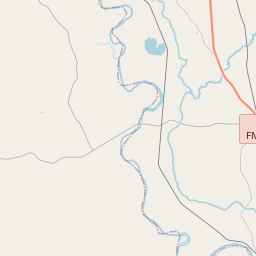Town of Calvert







Swarming ox-carts and cotton wagons, busy stores and saloons, casino tables stacked with gold: this was early Calvert, a major cotton export and trade center.
Community began as "Sterling," in Sterling C. Robertson colony of the 1820s. It was center of mustering and military supply activity in Civil War, 1861-1865.
When Houston & Texas Central Railroad route was established here, 1868, town was moved 2 mi. to the right of way and renamed for Judge Robert Calvert, pioneer Texan, local landowner, benefactor, and civic leader-- a descendant of Lord Baltimore of Maryland
As one of the most visible programs of the Texas Historical Commission (THC), historical markers commemorate diverse topics in Texas history, including: the history and architecture of houses, commercial and public buildings, religious congregations, and military sites; events that changed the course of local and state history; and individuals who have made lasting contributions to the state, community organizations, and businesses.
The Texas Rangers, a famous law enforcement agency, were first organized in 1835 to protect settlers from Native American attacks.
In 1837, the Texas Congress officially established Robertson County as one of the original counties of the Republic of Texas. During this time, the county experienced rapid growth with the influx of settlers from the United States, particularly from southern states such as Tennessee, Mississippi, and Alabama. These settlers primarily relied on agriculture, with cotton becoming a major cash crop in the region.
The county also played a significant role in the Texas Revolution and the subsequent formation of the Republic of Texas. The Battle of San Jacinto, a decisive battle that secured Texas independence from Mexico, took place just outside the county's borders in April 1836. Several notable figures from Texas history, including Sam Houston, were also closely tied to Robertson County.
Over the years, Robertson County has continued to thrive, with the economy diversifying beyond agriculture. While farming and ranching still remain important industries, the county has also seen growth in manufacturing, healthcare, and tourism sectors. Today, Robertson County is known for its small towns, rural beauty, and historical sites, attracting visitors and residents alike with its charming Southern atmosphere and rich cultural heritage.
Robertson County Timeline
This timeline provides a glimpse into the major events and milestones that have shaped the history of Robertson County, Texas.
- 1837: Robertson County is established from Milam County.
- 1846: The first county seat, Springfield, is established.
- 1854: The county seat is moved to Owensville.
- 1870: The town of Calvert becomes the county seat.
- 1873: The Houston and Texas Central Railway reaches Calvert.
- 1890: The St. Louis Southwestern Railway reaches Hearne.
- 1925: A portion of Robertson County is used to create Falls County.
- 1942: Camp Hearne, a World War II prisoner-of-war camp, is established.
- 1987: The Hearne Southern Pacific depot is added to the National Register of Historic Places.